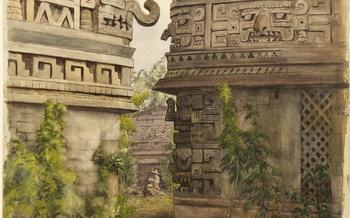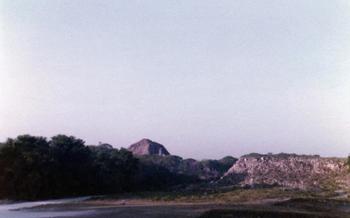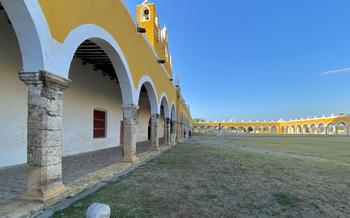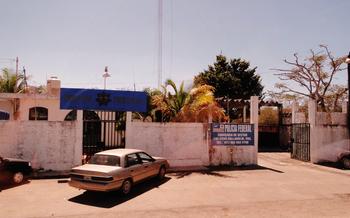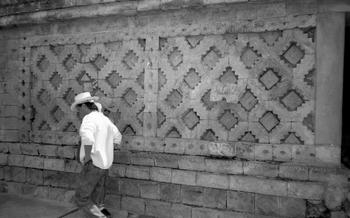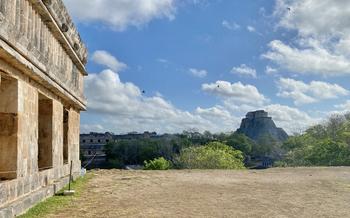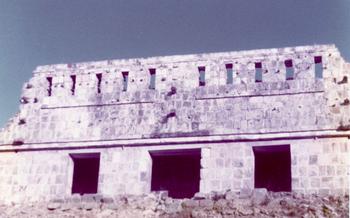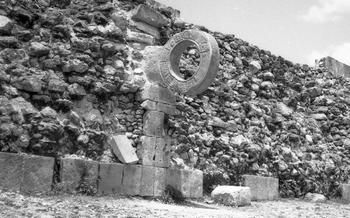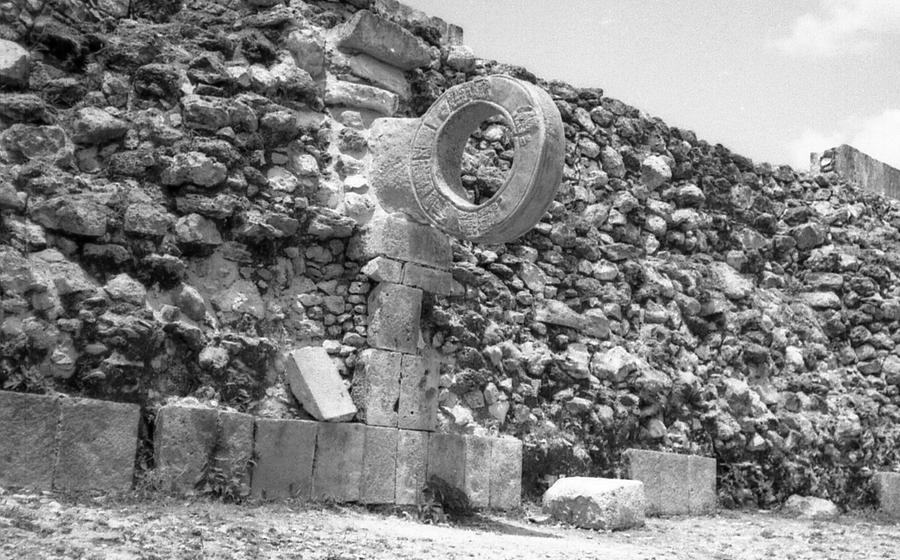
Cenote Zaci in Valladolid
- Uxmal: A Majestic Maya City Immersed in History
- Delving into the Past: Uncovering Uxmal's Rich History
- Exploring the Architectural Wonders of Uxmal
- Unlocking the Secrets of the Corbelled Arch
- Marveling at the Intricate Stone Carvings
- Experiencing Uxmal's Vibrant Cultural Heritage
- Tips for Enhancing Your Visit to Uxmal
- Venturing Beyond Uxmal: Exploring Neighboring Treasures
- Stepping into the Cenote Zaci: A Refreshing Oasis in Valladolid
- Unveiling the Secrets of Cenote Zaci
- Exploring the Alluring City of Valladolid
- Practical Tips for Visiting Cenote Zaci
Uxmal: A Majestic Maya City Immersed in History
In the heart of the Puuc Hills, nestled amidst lush vegetation, lies the ancient Maya city of Uxmal, a testament to the ingenuity and artistry of this enigmatic civilization. Uxmal's rich history dates back to the 6th century, reaching its zenith during the Classic Maya period (600-900 AD). The city's impressive architectural marvels, including the Governor's Palace, the Pyramid of the Magician, and the Nunnery Quadrangle, showcase the Maya's advanced engineering skills and intricate stone carvings. Uxmal's unique corbelled arch construction, where interlocking stones create arched doorways, is a testament to the Maya's architectural prowess, adding both beauty and structural integrity to their buildings.
The city's intricate stone carvings, depicting deities, rulers, and symbolic motifs, offer a glimpse into the Maya's rich iconography and storytelling traditions. Uxmal's cultural importance extends beyond its physical remains; it serves as a reminder of the Maya's enduring legacy and their profound impact on the region's history, culture, and traditions.
Delving into the Past: Uncovering Uxmal's Rich History
Uxmal's history is intricately intertwined with the rise and fall of the ancient Maya civilization. During the Classic Maya period (250-900 AD), Uxmal emerged as a prominent city-state, reaching its cultural zenith. The city was a hub of political power, religious ceremonies, and trade. The Maya people constructed magnificent temples, palaces, and other structures, showcasing their advanced architectural skills and artistic talents.
After the Classic period, Uxmal experienced a decline in its influence and population. The reasons for this decline are still debated among scholars, but it is believed to be related to a combination of factors, including climate change, political instability, and warfare. By the Post-Classic period (900-1521 AD), Uxmal was largely abandoned, although it remained a sacred site for the Maya people.
In the 19th century, Uxmal was rediscovered by European explorers and archaeologists, who were captivated by its well-preserved ruins. Since then, extensive archaeological research has been conducted at the site, shedding light on Uxmal's rich history and cultural significance. Today, Uxmal stands as a testament to the ingenuity and artistry of the ancient Maya civilization, attracting visitors from around the world who come to marvel at its architectural wonders and immerse themselves in its fascinating history.
Exploring the Architectural Wonders of Uxmal
Uxmal's architectural marvels stand as testaments to the Maya civilization's ingenuity and artistry. The Governor's Palace, a majestic administrative center, captivates with its intricate carvings and regal presence. The Pyramid of the Magician, an iconic landmark, showcases Maya engineering prowess with its imposing height and precisely aligned steps. The Nunnery Quadrangle, a complex of buildings, exhibits diverse architectural styles, from simple to ornate, reflecting the city's evolving history. And the Great Pyramid, with its towering presence and panoramic views, offers a breathtaking vista of the surrounding landscape. These architectural wonders transport visitors back in time, immersing them in the grandeur and beauty of the ancient Maya civilization.
Unlocking the Secrets of the Corbelled Arch
The corbelled arch, a hallmark of Uxmal's architecture, is a remarkable feat of engineering. Without the use of mortar or cement, the ancient Maya builders constructed sturdy and aesthetically pleasing arched doorways using interlocking stones. This technique, known as corbeling, involved gradually overlapping each layer of stone until they met at the apex, creating a stable and decorative arch.
The corbelled arch holds immense historical significance, showcasing the Maya's architectural prowess and innovation. It represents their ability to overcome construction challenges and adapt to the materials and resources available in their environment. This technique allowed them to create grand and elaborate structures without compromising their structural integrity.
Beyond its practical function, the corbelled arch also holds aesthetic appeal. The intricate patterns and designs formed by the interlocking stones add visual interest and elegance to Uxmal's buildings. The play of light and shadow on the arches creates a captivating effect, enhancing the overall beauty and grandeur of the site.
Marveling at the Intricate Stone Carvings
Uxmal's architectural marvels are adorned with exquisite stone carvings that captivate visitors with their intricate designs and narrative scenes. These carvings showcase the artistic prowess and cultural significance of the Maya civilization.
Maya iconography is prominently featured in the carvings, depicting deities, rulers, and symbolic motifs. These intricate carvings narrate stories and offer glimpses into the lives and beliefs of the ancient Maya.
The artistry of the carvings is evident in the intricate details and fluid lines that bring the figures to life. Each carving tells a story, revealing the cultural and historical significance of Uxmal.
Beyond their aesthetic appeal, the carvings provide valuable insights into the symbolism and cultural beliefs of the Maya. Scholars and archaeologists have dedicated years to deciphering the meanings behind these intricate artworks, shedding light on the complex world of the Maya civilization.
Experiencing Uxmal's Vibrant Cultural Heritage
Uxmal's cultural heritage is a vibrant tapestry woven with ancient traditions, artistic expressions, and culinary delights. Immerse yourself in the captivating performances of traditional Maya dances, where mesmerizing movements and colorful costumes bring ancient stories to life. Discover the vibrant colors and intricate designs of handcrafted textiles, pottery, and wood carvings, created by local artisans who perpetuate ancestral techniques. Indulge in the flavors of traditional Maya cuisine, a fusion of indigenous and Spanish influences, where dishes like "cochinita pibil" and "panuchos" tantalize your taste buds. Participate in lively festivals that honor Uxmal's cultural heritage, such as the "Festival de Luz y Sonido," where the ruins are illuminated with colorful projections, accompanied by traditional music and storytelling. These cultural experiences offer a profound connection to the living legacy of the ancient Maya civilization, allowing you to witness the continuity of traditions that have endured for centuries.
Tips for Enhancing Your Visit to Uxmal
To make the most of your visit to Uxmal, consider the following tips:
Dress comfortably: Opt for lightweight, breathable clothing and sturdy shoes suitable for uneven terrain. The weather in Uxmal can be hot and humid, so dress accordingly.
Stay hydrated: Bring plenty of water or purchase from vendors to stay hydrated, especially during the hot midday hours. Dehydration can lead to fatigue and discomfort, affecting your ability to fully appreciate the ruins.
Protect yourself from the sun: The sun can be intense in Uxmal, so be sure to wear a hat, sunglasses, and sunscreen to protect yourself from harmful UV rays.
Consider a guided tour: Guided tours offer an in-depth exploration of Uxmal's history, significance, and architectural features. Knowledgeable guides can provide insights and explanations that enhance your understanding and appreciation of the ruins.
Plan your visit: Uxmal is a large site, so plan to spend at least half a day exploring the ruins. Arrive early in the morning or late afternoon to avoid the midday heat and crowds.
Venturing Beyond Uxmal: Exploring Neighboring Treasures
While Uxmal stands as a testament to ancient Maya ingenuity, the Yucatan peninsula holds a treasure trove of other captivating Maya ruins, each with its unique story to tell. Just a short distance from Uxmal, history buffs and adventure seekers alike can embark on a journey to discover these hidden gems.
Kabah
Nestled amidst the lush vegetation of the Puuc region, Kabah boasts a distinct architectural style characterized by elaborate masks of the rain god Chaac adorning its buildings. Explore the Grand Pyramid, climb the steep steps of the Codz Poop, and admire the intricate carvings that tell tales of ancient Maya beliefs and rituals.
Sayil
Off the beaten path, Sayil unveils its charm with well-preserved buildings that showcase the transition from the Classic to the Post-Classic period. Wander through the remains of palaces, temples, and courtyards, marveling at the intricate stonework and the unique circular platform that sets Sayil apart from other Maya cities.
Labna
Renowned for its impressive archways and intricate carvings, Labna offers a glimpse into the architectural prowess of the Maya. Admire the Palace, with its grand archway leading to a series of chambers, and explore the Xtoloc Cenote, a natural wonder located within the ruins, believed to have been a sacred water source for the ancient Maya.
Stepping into the Cenote Zaci: A Refreshing Oasis in Valladolid
Nestled in the heart of Valladolid, a captivating colonial city neighboring the ancient Maya ruins of Uxmal, lies a natural wonder that beckons travelers to immerse themselves in its refreshing waters and embrace its cultural significance. Cenote Zaci, a striking natural pool, invites visitors to dive into its crystal-clear depths, snorkel amidst its diverse aquatic life, and marvel at the majestic limestone formations that encircle this enchanting oasis.
With its stunning beauty and allure, Cenote Zaci has captivated the hearts of locals and tourists alike. The cenote's crystal-clear waters provide an ideal sanctuary for swimming, snorkeling, and diving enthusiasts, offering a glimpse into the hidden underwater world that thrives beneath its surface. The surrounding lush vegetation and towering limestone cliffs create a picturesque backdrop, enhancing the mystical aura that envelops this natural wonder.
Beyond its undeniable natural beauty, Cenote Zaci holds a profound cultural significance for the ancient Maya. Believed to have been a sacred cenote, it was revered as a place of spiritual connection and purification. The Maya conducted elaborate rituals and ceremonies within the cenote's depths, seeking guidance and blessings from their deities. This sacred connection to the cenote has left an indelible mark on the cultural heritage of the region, adding to its allure and mystique.
Unveiling the Secrets of Cenote Zaci
Cenote Zaci holds a special place in Maya mythology and folklore. According to local legends, the cenote was considered a sacred portal to the underworld, known as Xibalba. It was believed that the cenote's waters possessed mystical powers, capable of healing the sick and granting wishes to those who made offerings.
Archaeological discoveries within the cenote have further enriched its allure. Excavations have revealed a treasure trove of artifacts, including ceramic vessels, jade ornaments, and human remains. These findings suggest that the cenote was used for various rituals and ceremonies, including offerings to the Maya gods.
In recent years, Cenote Zaci has become a popular destination for visitors seeking a unique and spiritual experience. Its mystical aura, coupled with its stunning natural beauty, has made it a must-see attraction for those interested in exploring the rich cultural heritage of the Yucatan Peninsula.
Exploring the Alluring City of Valladolid
Nestled in the heart of the Yucatan, Valladolid beckons travelers with its captivating colonial charm and vibrant cultural experiences. As you stroll along the cobblestone streets, admire the colorful facades of colonial-era buildings, each with its unique story to tell. Don't miss the opportunity to visit the Convent of San Bernardino de Siena, a magnificent example of 16th-century architecture that houses a museum showcasing the region's rich history.
Immerse yourself in the local traditions and cuisine at the bustling markets, where you can savor the flavors of traditional Maya dishes and shop for handcrafted souvenirs. Be sure to try the local specialty, Cochinita Pibil, a slow-roasted pork dish marinated in achiote paste and wrapped in banana leaves.
Valladolid is an ideal base for exploring other nearby attractions, including the iconic Chichen Itza and the lesser-known but equally impressive Ek Balam. Journey to Chichen Itza, a UNESCO World Heritage Site, to marvel at the towering pyramids, including the majestic El Castillo, and explore the ancient ball courts where the Maya played their sacred game. At Ek Balam, discover the remarkably well-preserved stucco sculptures and climb the grand Acropolis for breathtaking views of the surrounding jungle.
Whether you seek cultural immersion, historical exploration, or simply relaxation, Valladolid offers an enchanting blend of colonial heritage, natural wonders, and authentic Maya experiences.
Practical Tips for Visiting Cenote Zaci
To ensure a safe and enjoyable experience at Cenote Zaci, it is essential to be well-prepared. The cenote is equipped with essential facilities such as changing rooms, lockers, and restrooms for your convenience. Before venturing into the water, familiarize yourself with the safety guidelines and regulations. Life jackets are available for those who need them, and it is advisable to use proper equipment, especially if you plan to go swimming or diving. Additionally, remember to respect the natural environment and cultural significance of Cenote Zaci by avoiding littering and maintaining a considerate attitude towards the site. By following these simple guidelines, you can contribute to preserving the pristine beauty and cultural heritage of this natural wonder.
